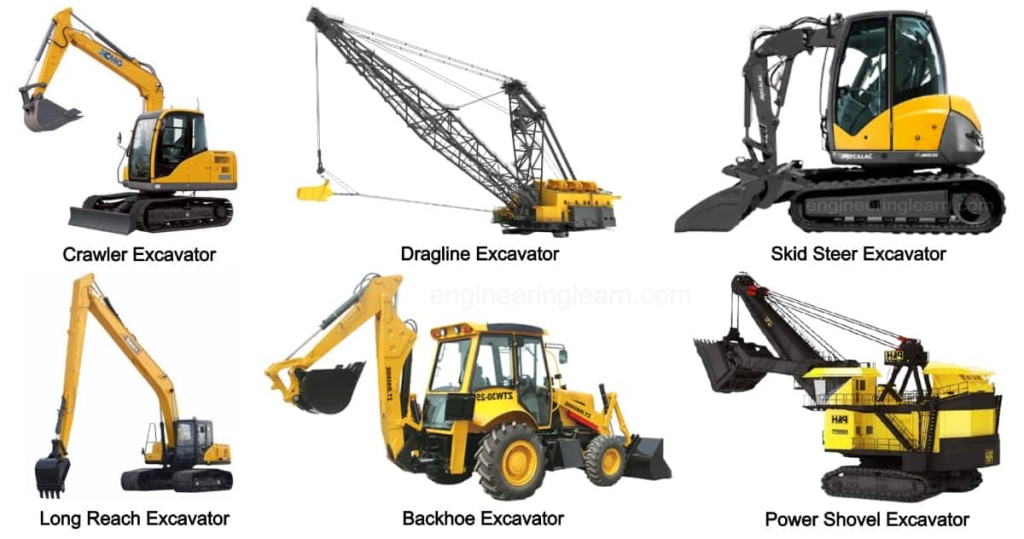Types of Diggers: Unveiling the Diversity in Construction Equipment

Diggers, or excavators, come in a variety of types, each designed to meet specific needs and perform unique tasks in the construction and earthmoving industries.
One common type is the mini digger. These compact machines are highly maneuverable and ideal for working in tight spaces such as small construction sites, gardens, or urban areas with limited access. Mini diggers are often used for tasks like digging trenches for plumbing or electrical work, and small-scale landscaping projects.
Standard excavators, on the other hand, are larger and more powerful. They are the workhorses of major construction projects, capable of handling large volumes of soil and performing deep excavations for foundations, basements, and large-scale infrastructure developments.
Backhoe loaders combine the functions of a loader at the front and an excavator at the back. This makes them versatile as they can be used for both loading materials and digging. They are frequently seen in smaller construction projects and utility work.
Another type is the long-reach excavator. These have extended booms and arms, allowing them to reach over obstacles or work in deeper and wider areas. They are commonly used in riverbank stabilisation, deep trenching, and demolition projects where access is difficult.
Wheel excavators offer the advantage of mobility as they can move quickly between job sites on wheels rather than tracks. They are suitable for projects that require frequent relocation within a relatively short distance.
Dragline excavators are used in large-scale mining and quarrying operations. They use a large bucket attached to a cable to excavate and remove large amounts of material.
In conclusion, the different types of diggers play crucial roles in various construction and earthmoving operations, each bringing its own set of capabilities and advantages to get the job done efficiently.
The Various Types of Diggers and Their Applications

When it comes to the world of construction and earthmoving, the types of diggers available are as diverse as the tasks they perform.
Among them, hydraulic excavators stand out for their power and precision. These machines use hydraulic systems to control the movement and operation of the digging arm and bucket. They are widely used in construction, mining, and road-building projects due to their ability to handle heavy loads and perform complex digging operations.
Crawler excavators are known for their stability and ability to work on uneven terrains. The tracks provide excellent traction, making them suitable for jobs in challenging landscapes such as hillsides or muddy areas. They are often employed in large-scale construction and infrastructure projects.
Then there are swamp excavators, specially designed to work in wet and marshy conditions. These diggers have features like wider tracks and pontoons to prevent them from sinking in soft ground. They are essential for projects like building canals or working in wetlands.
Telehandlers, which are a type of digger with an extendable boom, are useful for reaching high places and handling materials at different heights. They are commonly used in warehouse operations and construction sites where materials need to be lifted and placed accurately.
Skid-steer loaders are compact and agile, capable of turning in tight spaces. They are often used for small-scale landscaping, snow removal, and light construction tasks.
Finally, demolition excavators are equipped with specialized attachments for breaking and tearing down structures. They play a vital role in urban renewal and demolition projects.
In summary, the wide range of types of diggers ensures that there is a suitable machine for every specific construction and earthmoving requirement.
Exploring the Different Categories of Diggers in Construction Work
The field of construction is home to a plethora of digger types, each engineered to meet distinct demands and challenges.
Bucket-wheel excavators are massive machines used in large surface mining operations. Their huge rotating wheels with buckets attached can excavate and move vast amounts of material in a short time.
Compact excavators are a smaller version of standard machines, perfect for tasks in confined spaces like indoor renovations or narrow alleys. They are easy to transport and operate in tight quarters.
Rotary excavators use a rotating drill bit to dig holes precisely. They are commonly used in the installation of utility poles, fence posts, and for geotechnical investigations.
Suction excavators are unique in that they use vacuum power to remove soil and debris. This makes them ideal for working around sensitive underground utilities without causing damage.
Tunnel boring machines are specialized diggers designed for creating tunnels through solid rock or soil. They are used in subway construction and other underground infrastructure projects.
Each type of digger brings its own set of capabilities and limitations, and choosing the right one depends on factors such as the nature and scale of the project, the working environment, and the specific requirements of the task at hand.
In conclusion, the diverse range of digger types reflects the complexity and variety of construction and earthmoving operations, and their continued development and innovation drive the progress of the industry.